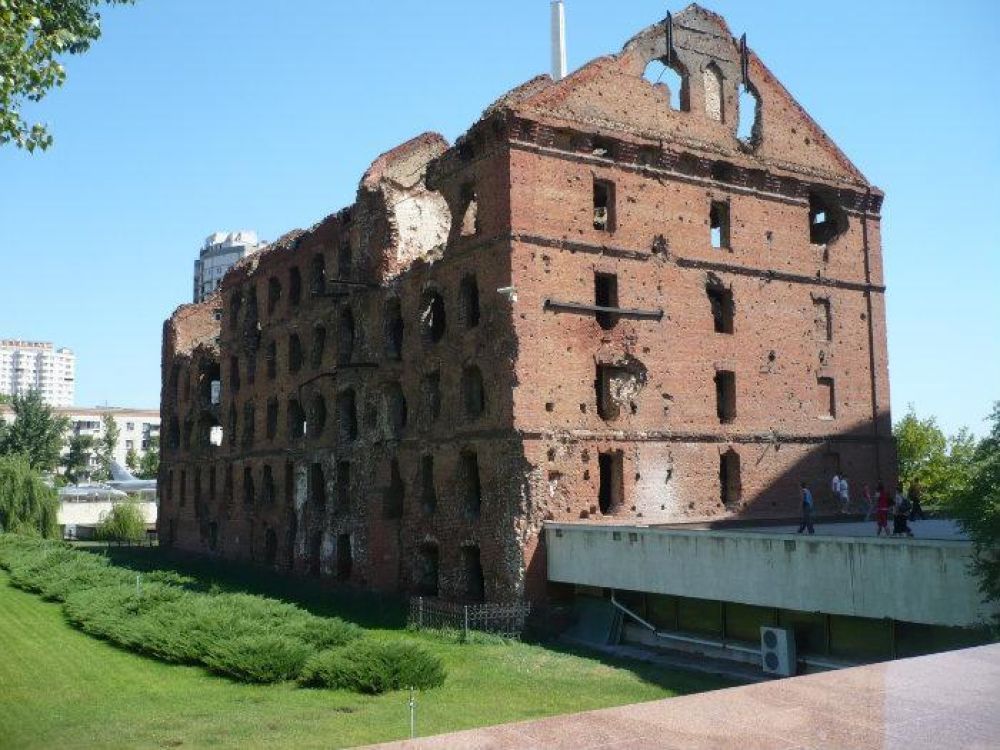

The Flour Mill Ruins in Volgograd, formerly known as Stalingrad, are a solemn reminder of the fierce Battle of Stalingrad during World War II. Built in the 19th century, this flour mill was once one of the most successful businesses in the area, owned by a German businessman named Gerhardt. However, its prosperity was short-lived due to the events of the Second World War.
During the Battle of Stalingrad, one of the bloodiest battles in history, the mill was heavily bombed. What remains today is the skeleton of a once vibrant industrial site. The ruins have been preserved much like they were after the conflict ended in 1943, serving as a poignant memorial to the lives lost and the resilience of the human spirit in times of war.
The significance of the Flour Mill came to light post-war, as it became a symbol not only of the city's devastation but also of its fierce resistance. The site started to gain attention from both local visitors and those from afar, who wished to pay their respects and learn more about this critical period in history.
Over time, the ruins became an integral part of the "Hero City" of Volgograd's tourist trail. The addition of the Mamayev Kurgan monument complex nearby, which includes the towering "Motherland Calls" statue, further cemented the mill's place in the narrative of World War II history.
The decision to preserve the ruins was deliberate, aimed at maintaining the raw impact of the war on the city. This has played a vital role in tourism for the city. Visitors come to see the juxtaposition between the devastation displayed by the ruins and the modern city that has risen around it.
In recent years, there has been a movement towards authentic travel experiences and dark tourism, where tourists seek out sites associated with tragedy or death as a way to connect with history. The Flour Mill Ruins fit this trend, as they offer a tangible link to the battles of the past. In response, the tourism infrastructure around the ruins has been developed, including guided tours, multimedia exhibits, and commemorative events, especially around significant anniversaries.
Furthermore, with the advent of technologies such as virtual reality (VR) and augmented reality (AR), there is potential for new ways of engaging with historical sites such as the Flour Mill Ruins. These technologies can bring stories to life, allowing visitors an immersive experience of the mill's history and the Battle of Stalingrad.
The Flour Mill Ruins in Volgograd stand as a stark reminder of the past and continue to be an essential part of the city's historical tourism. They symbolize not only the devastation of war but also the resolve to remember and learn from it. As tourism evolves, the ruins are likely to remain at the heart of Volgograd's appeal to those looking to connect with history on a profound level.